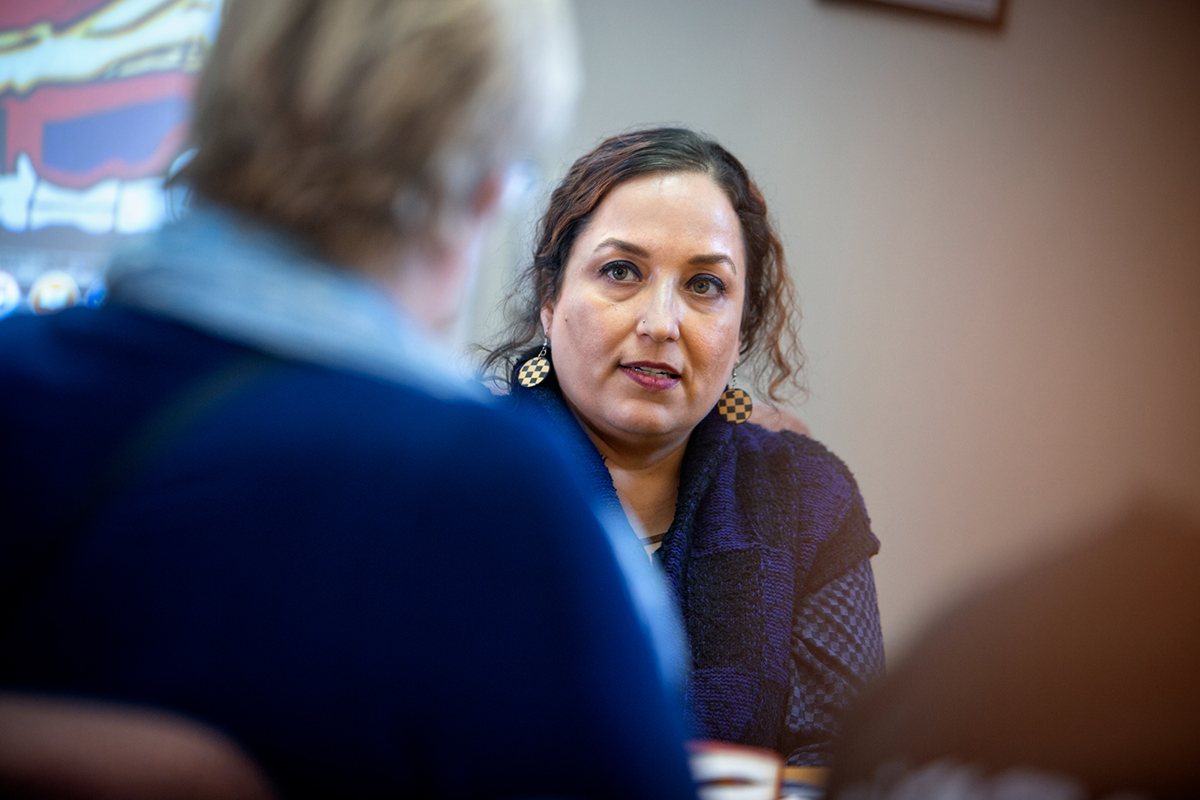Diaz's study of art collective journeys into Chicano/a culture
By Daniel Aloi

Assistant professor of English and Latino/a studies Ella Maria Diaz had never heard of the Royal Chicano Air Force (RCAF) arts collective before she realized she had been walking past their work for years.
The northern California native only read of the collective’s work, notably their murals in Sacramento, in a newspaper article as she was on a plane from California’s capital city to Virginia to begin her graduate studies in 2000.
Thus began her journey with the vanguard group of artists and activists, chronicled in her book “Flying Under the Radar With the Royal Chicano Air Force,” published in April.
“I had never considered the origins of these massive murals,” she writes. “The RCAF’s art history – when the artwork was made and who and what it responded to – began for me in the twenty-first century. … While I had access to culture, history and language at home through my family, Chicano/a art, literature and history were not taught in my public school classrooms, where a particular cultural vision of American art, literature and history was definitely taught. My lack of Chicano/a consciousness in 2000 mirrors its absence from the historical consciousness of the United States to date.”
In the first in-depth study of the RCAF and their work since 1970 combining art, community engagement and activism, Diaz explores how the RCAF questioned and countered artistic conventions in the U.S. and Mexico, and the significant contributions of women in the collective amid the patriarchal norms within the Chicano movement. She also details the RCAF members’ artistic work and how their verbal and visual language of Chicano/a signs, symbols and texts led to scholarship and theoretical advances in the 1990s and after.

Artists Esteban Villa and José Montoya founded the Rebel Chicano Art Front in 1970 at then-California State College in Sacramento, and were soon joined by students and members of the Chicano community. Later renaming themselves the Royal Chicano Air Force, their mission was to promote Chicano/a and indigenous artists, art and culture, often reimagining American history through a Chicano perspective, and to educate young people in Chicano culture, instill political awareness, and foster support for César Chávez and the United Farm Workers.
They created visual art, pottery, poetry, prose and music, and organized a number of cultural, political and educational activities in the Sacramento area – including teaching silkscreen printing, drawing and mural painting to a generation of young artists at California State University, Sacramento. Well-known for their murals and poster art, the RCAF also began initiatives that survive into the 21st century, such as the Barrio Art Program at a Sacramento neighborhood center and programs bringing the arts to youth offenders in the California justice system.
Diaz researched the RCAF for the better part of a decade as the subject of her doctoral dissertation at the College of William and Mary and while she was an adjunct lecturer at the San Francisco Art Institute, publishing some of her work along the way. She won a distinguished dissertation award in the humanities and social sciences from the College of William and Mary in 2010.
Since coming to Cornell, she said, her research continues to influence her.
“In the process of studying their history and learning about the pedagogy, the RCAF deeply impacted my choices in the classroom and the type of mentoring I do,” Diaz said.
The collective’s work is preserved in the California Ethnic and Multicultural Archive at the University of California, Santa Barbara. Several of the RCAF’s key figures have passed away, Diaz said, including Ricardo Favela in 2007, José Montoya in 2013, and civil rights activist and Mayor of Sacramento Joe Serna Jr., who died in 1999.
“The remaining members continue to work and to teach,” she said.
Diaz’s work on the book was supported in part by a fellowship awarded by the Woodrow Wilson National Fellowship Foundation in 2015.
Media Contact
Get Cornell news delivered right to your inbox.
Subscribe